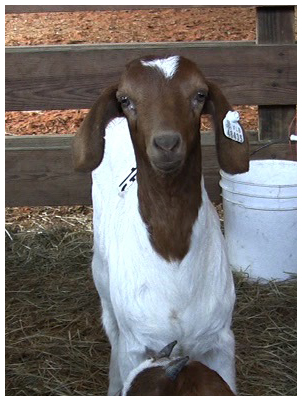History revealed at Hogtown Bayou
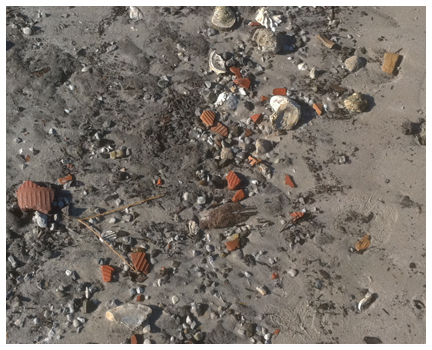
Low water conditions expose shards of turpentine pots along bayou shoreline
During winter months, water levels in the Choctawhatchee Bay and adjoining bayous are lower than other seasons. Northerly winds blow water out into the gulf, exposing more bay and bayou shoreline.
Combined with low tide conditions, Hogtown Bayou in Santa Rosa Beach reveals a bit more, as shards of old turpentine pots can be easily found.
Back in the late 1800s and early 1900s the area of Hogtown Bayou was the community of Santa Rosa, home to a general store, sugar cane syrup factory, a cannery, hotels and a variety of businesses. It was also the location of two turpentine mills. No doubt discards from the days of the mills operation, these tiny pieces of history remain on the bayou floor to this day around Cessna Landing.
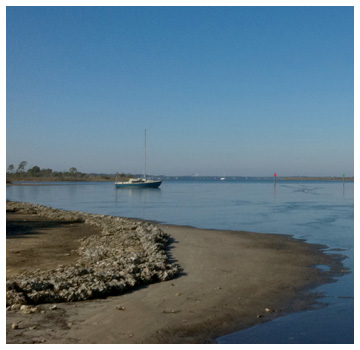
Turpentine was harvested from long leaf pine trees all over Walton County and Northwest Florida back then, and evidence of the activity may be found in the area forests as well.
To view a collection of turpentine pots, visit the Coastal Branch Library, 437 Greenway Trail, Santa Rosa Beach.
About the turpentining in our area:
Naval stores was the term for products that were essential to the production and maintenance of wooden ships such as tar and pitch, which were used to seal the bow and deck. In the 17th and 18th centuries, both the English and Spanish made profits by exploiting the vast pine forests in Northwest Florida for this purpose.
Turpentine is a derivative of tree resin used in paint and varnish solvents, disinfectants, liniments, medicated soaps, lamp fuel, and perfume. Rosin is used to make paper, soap, and varnish.
In the 19th century, lumber mills were built along the waterways that lead to the bayous because they provided both water power and a way to transport cut planks to the port of Pensacola.
Information courtesy Heritage Museum of Northwest Florida, and “The Way We Were” a publication of the South Walton Three Arts Alliance, Inc.
– – – – – – – – – – – –
Sandhill cranes migrate to North Walton County
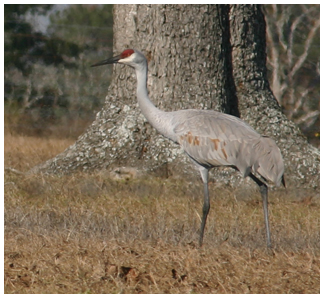
Winter visitors a welcome sight for local bird lovers
Clara Pittman of North Walton County looks forward to the special wintering guests she enjoys watching arrive in late fall. For the last five years, sandhill cranes have been migrating to the wetlands near her home just south of Lake Jackson in North Walton.
Typically arriving in mid-December and staying until mid-March, the cranes are a welcome sight, and have been flocking to the area in large numbers.
“I have seen as many a three dozen in the wetlands; I enjoy watching them,” Clara said.
With a wingspan of up to 78 inches and standing more than 3 feet tall, the sandhill crane (Grus canadensis) is one of the largest birds in North America. There are several subspecies of the sandhill crane with the Lesser Sandhill (Northern) migrating from the northern U.S. and the Greater Sandhill (Southern) year-round residents in southern Florida. Click here to continue
– – – – – – – – – – – –
Remnants of the Captain Fritz steamboat in the Choctawhatchee riverbed
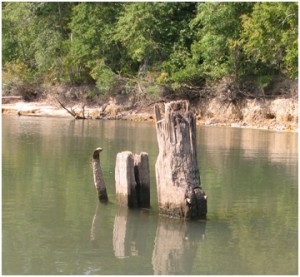
Low water levels expose pieces of Walton history
Back in the late 1800s and early 1900s much of Walton County’s commerce was transported via water. Sown lumber, turpentine and vegetables were shipped to the mills and markets of Pensacola via steamboat and schooner.
One of the major steamboats that made a regular run between Freeport, Point Washington and Pensacola was the Capt. Fritz. A stern wheel steamboat built in 1892 the Capt. Fritz started operations in the Choctawhatchee Bay. She transported goods and passengers until she caught fire and burned at Cedar Tree Landing on the river on Sept. 19, 1930. Historical records show that when the vessel caught fire at Cedar Tree Landing she was cut loose from her moorings. The ship floated down river to her current resting place about one mile north of Cowford Landing. Remnants of the Capt. Fritz are easily visible when the river level is low.
Walton County resident Ken Little and his wife Gator have a close connection to the Capt. Fritz.
“Gator’s grandfather and great-grandfather were skippers of the Fritz during part of the time she was in service,” Ken recalled. Click here to continue
– – – – – – – – – – – –
Local dentist shares his love of the Choctawhatchee River
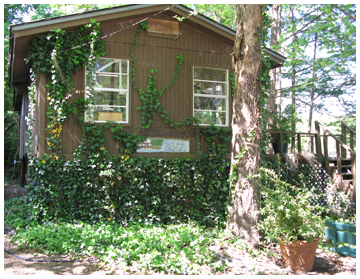
Beautiful smiles thrive at John’s Little Acre
To say that Doctor John Savage has lived an interesting and productive life is an understatement. Living along the Choctawhatchee River, John has brought hundreds of smiles through his dental practice and kind heart.
Born and raised in the Walton County area, John and his family spent most of their lives along the Choctawhatchee River. John’s great grandfather was a dentist who traveled via horse and buggy to treat his patients along the river in the late 1800s.
The family moved around the area living in Vernon, Chipley, DeFuniak Springs, West Bay and Destin as John’s father worked construction building roads and bridges in the area. Click here to continue
– – – – – – – – – – – –
Finks Mill one of the last operating stone grist mills in the Southeast
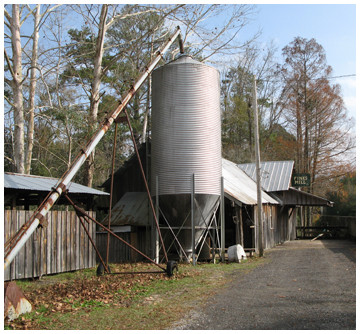
Farmers come for miles to have their corn stone ground
Many years ago, grist mills were in most communities, as local farmers brought their corn or grains to be ground for selling or personal use.
Over the years, with the influx of large commercial operations that produce meal for the masses buy creating ready-to-eat mix, the local mills have declined to only a few surviving across the United States. These few mills cater to farmers bringing their corn to be stone ground, mostly for their own consumption.
Just past Gaskin, on the Walton County, Fla., Geneva/Covington, Ala. border you will find one of the last remaining operational stone grist mills in the Southeastern United States, Finks Mill.
The mill was originally built in 1932, and passed through two hands until the Fink family took over in the early 1950s. The mill is currently operated by Rodney Fink and owned by his father, Quin. Read More…
– – – – – – – – – – – –
Living with Florida black bears
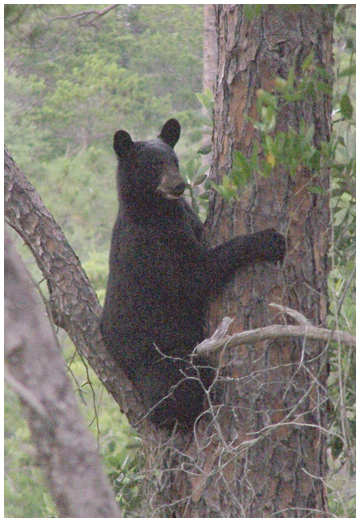
The presence of bears is not necessarily a problem or a threat to your safety. For many people seeing a black bear is a thrilling, rewarding experience.
Problems arise when bears have access to food sources unintentionally made available by people such as pet foods, garbage, barbecue grills, bird seed or livestock feed. Bears are adaptable and learn very quickly to associate people with food. Black bears are normally too shy to risk contact with humans, but their strong food drive can overwhelm these instincts.
The Florida black bear is a unique subspecies of the American black bear, and is listed as a threatened species in Florida and is the state’s largest land mammal. Black bears once ranged throughout Florida but now live in several fragmented areas across the state.
Since the 1980s, the black bear population has been expanding along with our human population. Florida has grown from 5 million residents in 1960 to close to 18 million today and is projected to reach almost 36 million by 2060. Urban sprawl is encroaching on traditionally remote areas and bringing people into prime bear habitat. As a result bears and people are encountering each other more than ever. Read More…
– – – – – – – – – – – –
A guide to Florida snakes

Florida has an abundance of wildlife, including a wide variety of reptiles. Snakes, and their cousins the alligators, crocodiles, turtles and lizards, play an interesting and vital role in Florida’s complex ecology. Many people have an uncontrollable fear of snakes. Perhaps because man is an animal who stands upright, he has developed a deep-rooted aversion to all crawling creatures. And, too, snakes long have been use in folklore to symbolize falseness and evil. The ill- starred idea has no doubt colored human feelings regarding snakes. Whatever the reason for disfavor, they nonetheless occupy a valuable place in the fauna of the region. Click here to continue
– – – – – – – – – – – –
Ugh… the dog flies have arrived in the Florida Panhandle
 When fall comes to our area, those refreshing weather fronts will move through from the north bringing lower humidity, lower temperatures and the infamous dog fly. The stable fly, known as the dog fly in Northwest Florida, is a blood feeding fly that is a nuisance to man, pets, and livestock. From August through November the dog fly congregates on the Florida Panhandle beaches. This fly originates from farming areas in southern Alabama, Mississippi, Georgia and northern Florida and rides the northerly winds associated with cold fronts that move through our area. Click here to continue
When fall comes to our area, those refreshing weather fronts will move through from the north bringing lower humidity, lower temperatures and the infamous dog fly. The stable fly, known as the dog fly in Northwest Florida, is a blood feeding fly that is a nuisance to man, pets, and livestock. From August through November the dog fly congregates on the Florida Panhandle beaches. This fly originates from farming areas in southern Alabama, Mississippi, Georgia and northern Florida and rides the northerly winds associated with cold fronts that move through our area. Click here to continue
– – – – – – – – – – – –
Old friends reminisce about the early days of Grayton Beach fishing

Locals in Walton County have enjoyed fishing from Grayton Beach for generations. With a panoramic view of the Gulf, gentle breezes, it doesn’t get any better. Two long-time friends Van Ness Butler, Jr. and Gene Wesley remember the days when Grayton Beach had just a handful of residents. Van Ness Butler, Jr. grew up in the area and has fond memories of the early days fishing on Grayton Beach. Butler remembers locals, Herbert and Olin Miller as one of the first to launch a boat from Grayton Beach in the 1940s. A New England style dory, with a Model A engine, was rolled over logs across the sand to get to the Gulf of Mexico. “Western Lake rarely opened to the Gulf even back then. It was hard work getting that dory in and out of the water,” Butler recalls. Click here to continue
– – – – – – – – – – – –
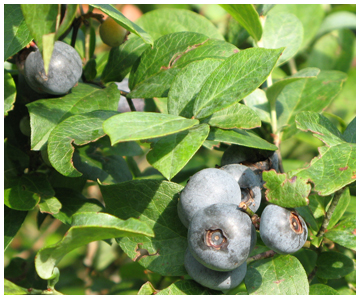 Where to find local sweet blueberries
Where to find local sweet blueberries
June and July is the time of year to head out and find tasty Florida blueberries. In addition to a great topping for cereal or salads, blueberry pancakes, muffins and coffee cakes are also a popular homemade treat for berry lovers. Click here to continue
– – – – – – – – – – – –
It’s that time of year again, and those blood-thirsty yellow flies are here… here are some tips for armoring yourself
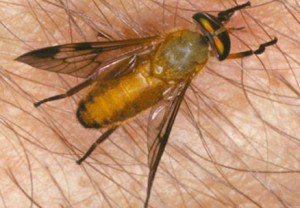
In Florida, the name “yellow fly” is used to describe about a dozen different species of yellow-bodied biting flies. “Yellow flies” readily attack man and are usually abundant in Florida with peak annoyance occurring in May and June. “Yellow flies” are in the family known as Tabanidae. All tabanids go through an egg, larva, pupa and adult stage, referred to as “complete metamorphosis,” the same development process that mosquitoes go through. Tabanids lay egg masses containing 50 to several hundred eggs. Most species deposit their eggs around ponds, streams or swamps on overhanging vegetation such as grasses or cattails. Click here to continue
– – – – – – – – – – – –
Paxton comes alive the first Saturday of the month
As times get leaner, many are looking into finding creative ways to find a bargain. One way to find the real deal, is to take drive to the Rockin S Auction the first Saturday of the month. Held at the old livestock building on U.S. Hwy 331 in Paxton, the auction comes to life around 8:30 a.m. as a stream of trucks and trailers pour into the site loaded with everything from household items and tools, to goats and chickens, to fresh eggs and preserves.CLICK HERE TO CONTINUE
– – – – – – – – – – – –

